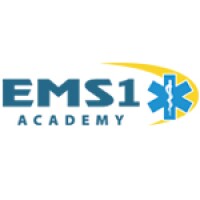Traumatic head injuries account for 2.5 million emergency department visits annually in the United States. More than 10 percent of these head injuries are hospitalized, from which nearly 53,000 die. This is more than one-third of all injury-related deaths.
In the past, it was thought that there was little that prehospital care providers could do for patients with head injuries, but new research and expanding partnerships with emergency trauma teams reveal that EMS is critical in improving outcomes for these patients.
The difference between primary and secondary head injuries
Primary brain injury and secondary brain injury are terms that classify the processes that occur when a patient suffers head trauma. Primary brain injury occurs during the initial impact, when the physical structures of the brain are displaced. Secondary brain injuries involve the chemical, cellular and perfusion damage that evolve over the minutes-to-hours following the initial impact. Many of these secondary injuries may be preventable with proper initial trauma care.
EPIC: An EMS-centered approach to head injuries
The “Guidelines for Prehospital Management of Severe Traumatic Brain Injury” from the Brain Trauma Foundation highlight the importance of the care provided immediately after the primary head injury, emphasizing it can significantly improve or worsen a secondary brain injury.
In 2011, the University of Arizona, in partnership with the Arizona Department of Health Services, developed an EMS-centered traumatic brain injury project known as EPIC: Excellence in Prehospital Injury Care. This project, headed by Dr. Daniel Spaite, focused on clear, field-ready guidelines intended to make a significant difference in the lives of victims of traumatic head injury.
Who should receive EPIC treatment?
Patients who would benefit from the EPIC treatment are those with trauma from any cause who experience any of the following:
- Loss of consciousness.
- GCS of 14 or less.
- Any post-traumatic seizures.
- Multisystem trauma requiring intubation.
The EPIC treatment focuses on initial trauma care centered around the three brain injury “H-Bombs:”
- Hypoxia
- Hyperventilation
- Hypotension
While these are all issues that EMS would normally try to prevent in any patient, an injured brain is particularly susceptible to these three disturbances and may suffer permanent injury due to even slight complications:
1. Hypoxia
Due to the fact that any single episode of hypoxia can double the mortality chance of a head-injured patient, the EPIC program recommends keeping the SpO2 of head injured patients as close to 100 percent as possible through early application of O2, even if SpO2 is above 90 percent.
Keep this in mind, especially when working to establish an advanced airway on a head-injured patient, as the process of doing so may drop the SpO2, making the cost of hypoxia not worth the benefit of the advanced airway.
2. Hyperventilation
In an effort to prevent hypoxia, it can be easy to inadvertently hyperventilate a victim of head injury. In fact, recommendations have existed to hyperventilate some victims of severe traumatic brain injury under some circumstances. EPIC recommends avoiding this as ventilating too much of the patient’s CO2 can cause vasoconstriction, causing an increase in patient mortality.
Close attention to ventilation rates, ventilation rate timers, pressure controlled BVMs and monitoring EtCO2 to keep it between 34-45 mmHg are all effective ways for first responders to prevent further damage.
3. Hypotension
Even a brief episode of hypotension can more than double the mortality from head injuries. Use caution when administering pain medications or sedatives as they may rapidly drop blood pressure. Aggressively work to treat and prevent hypotension. EPIC recommends an initial 1000 mL bolus followed by repeat 500 mL boluses as needed to maintain systolic blood pressure greater than 90 mmHg.
Adjust EPIC procedures for children and the elderly
While the guidelines above apply to adults, pediatric patients may benefit from EPIC treatment as well using some different numbers.
- Hypoxia: Kids benefit from the same early, high-flow O2 administration.
- Hyperventilation: EtCO2 should still be maintained between 34-45 mmHg. Ventilation rates should be appropriate for infants (approx. 24 bpm) and children (20 bpm).
- Hypotension: Age-appropriate, minimum systolic blood pressures can be found using a variety of reference tapes, apps or other systems, or roughly calculated as 70 + (2 x patient’s age). Don’t let the systolic blood pressure fall below this number.
Similarly, the EPIC guidelines apply to geriatric patients, but with some additional considerations.
- Geriatric victims of trauma are typically under-triaged. Consider age as a risk factor.
- Many geriatric patients take some form of blood thinner. These should be identified, as they significantly contribute to morbidity and mortality.
- Geriatric victims of trauma often have medical comorbidities that complicate treatment. You may have to manage medical as well as trauma issues with older patients.
Extensive research, much of it based on military experience, continues to drive trauma care. One day, there may be a pre-hospital treatment that is able to prevent, or even reverse the damage of traumatic brain injury. In the meantime, every EMS provider can help make a very real difference by providing EPIC management to victims of traumatic head injury by preventing the H-bombs of hypoxia, hyperventilation and hypotension.
References
1. American Association of Neurological Surgeons. Traumatic Brain Injury. (2015). Available at: https://www.aans.org. (Accessed: 9 September 2015)
2. Badjatia, N. et al. Guidelines for Prehospital Management of Traumatic Brain Injury 2nd Edition. Prehosp Emerg Care 12, S1–S52 (2008).
3. Spaite, D. W. et al. Evaluation of the Impact of Implementing the Emergency Medical Services Traumatic Brain Injury Guidelines in Arizona: The Excellence in Prehospital Injury Care (EPIC) Study Methodology. Academic Emergency Medicine 21, 818–830 (2014).
4. Wijayatilake, D. S., Sherren, P. B. & Jigajinni, S. V. Systemic complications of traumatic brain injury. Current Opinion in Anaesthesiology 1 (2015). doi:10.1097/ACO.0000000000000236
5. Atkinson, J. L. D. The Neglected Prehospital Phase of Head Injury: Apnea and Catecholamine Surge. Mayo Clinic Proceedings 75, 37–47 (2000).
6. Brain Trauma Foundation. Brain Trauma Foundation Guidelines. tbiguidelines.org (2010). Available at: http://tbiguidelines.org/glHome.aspx. (Accessed: 28 July 2015)
7. Spaite, D. W. Excellence in Prehospital Injury Care (EPIC) | Excellence in Prehospital Injury Care - Traumatic Brain Injury. epic.arizona.edu (2014). Available at: https://epic.arizona.edu/. (Accessed: 27 October 2017)
8. American Academy of Orthopaedic Surgeons. Nancy Caroline’s Emergency Care in the Streets. (2017).
9. Brenner, M. et al. Association between early hyperoxia and worse outcomes after traumatic brain injury. Arch Surg 147, 1042–1046 (2012).
This article, originally published in March 2018, has been updated.














